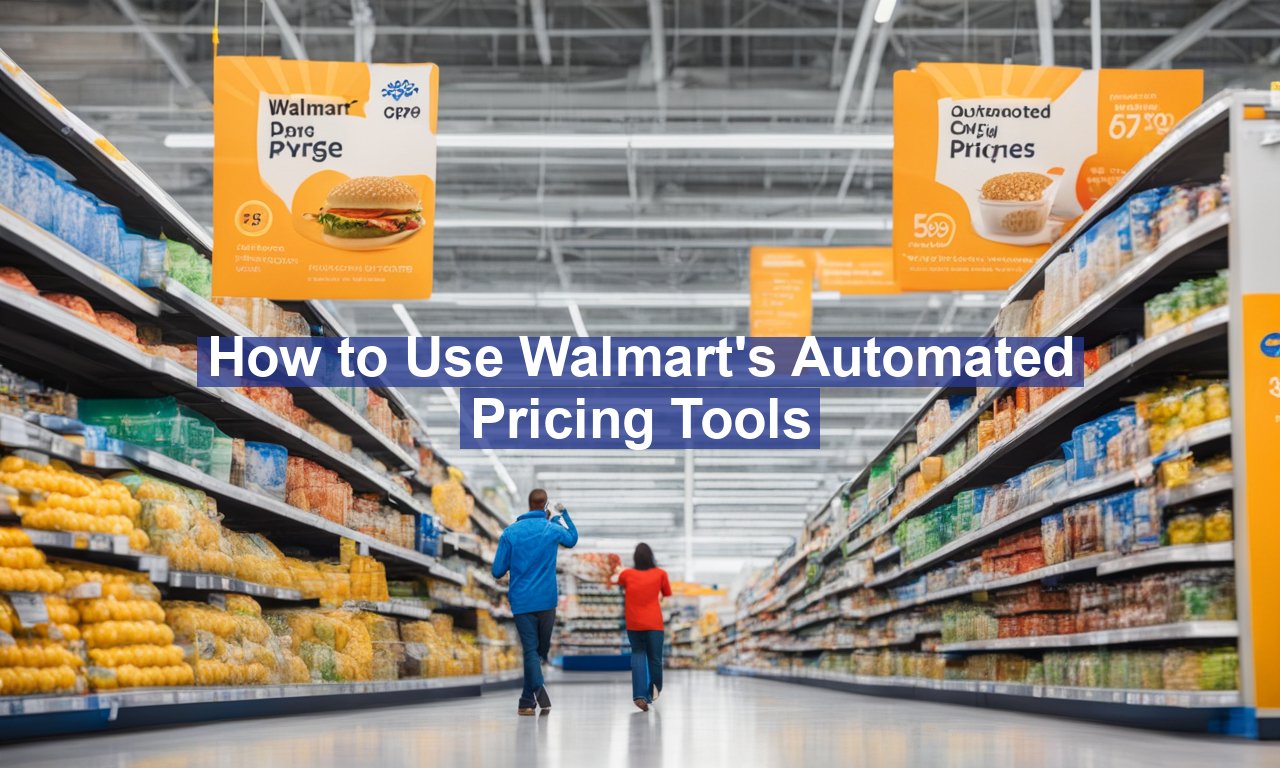How to use Walmart‘s automated pricing tools, Imagine walking into a store and seeing prices fluctuate based on real-time market demands, stock levels, and competitor pricing. This isn’t a futuristic scenario; it’s happening now, thanks to Walmart’s automated pricing tools. For a retailer as massive as Walmart, employing advanced technology to manage pricing isn’t just a convenience—it’s a necessity.
But how can smaller vendors and partners leverage these tools? This article dives into the nuts and bolts of Walmart‘s automated pricing strategy, enlightening you on how to utilize these tools effectively to elevate your business.
Understanding How to Use Walmart’s Automated Pricing Tools
Walmart’s automated pricing tools are part of a broader technological ecosystem designed to enhance both operational efficiency and customer satisfaction. These tools use algorithms and AI to adjust prices dynamically, adhering to predefined rules and responding instantaneously to external market factors. But why should this matter to you as a vendor or a supplier?
- Stay Competitive
Automated pricing ensures that your products remain competitively priced against those of rivals. This is crucial in maintaining the visibility and attractiveness of your offerings to potential buyers. - Optimize Revenue
By responding to demand fluctuations in real-time, you’re able to implement strategic price adjustments to maximize sales and revenue. This could mean offering discounts when stock is high or raising prices slightly when demand peaks.
Features that Make Walmart’s Pricing Tools Stand Out
The unique selling proposition of these tools isn’t just about automated adjustments but also about the features that make the process seamless and effective.
- Data-Driven Insights
The pricing tools offer deep dives into market trends, enabling partners to forecast and strategize proactively. Walmart utilizes a comprehensive set of data points tailored to ensure that vendors are not flying blind. - Flexible Configuration
Vendors can set parameters and rules to govern how their products are priced. Whether it’s setting a minimum or maximum price or determining price changes based on competitor activity, the flexibility offered here is unparalleled.
How to Implement Automated Pricing as a Vendor
Ready to leverage these incredible tools? Here’s how you can get started.
- Integrate with Walmart’s System
To access Walmart’s automated pricing tools, your products need to be part of Walmart’s ecosystem. This usually involves enrolling as a Walmart vendor or a partner. Walmart (WMT) provides a comprehensive guide to get you started on this process. - Understand the Dashboard
Once you’re part of the ecosystem, get familiar with the pricing dashboard. This is your control center for setting pricing rules and analyzing data. Engage tutorials or customer support to ensure you understand every feature available to you.
Set Dynamic Pricing Rules
The beauty of automated pricing is the ability to set rules. Reclining on your business needs, these could include:
- Time-based Pricing coordination: Modify prices during specific hours or seasons.
- Inventory-based Pricing: Lower prices to clear out excess stock or raise them when it’s limited.
- Competitor-based Adjustments: Change prices when competitors lower their prices, ensuring competitiveness.
Monitor and Iterate
Automated pricing isn’t about set-it-and-forget-it. Regularly monitor your pricing strategy’s performance through dashboards and reports. Use data-driven insights for necessary adjustments, ensuring your pricing strategies align with market conditions.
Examples of Success
Real-world examples often illustrate concepts better than hypotheticals. Take, for instance, the case of a small electronics vendor. By implementing automated pricing strategies focusing on seasonal demand and competitor pricing, they observed a 15% increase in overall revenue within six months. As outlined in a Forbes article on technology in retail, vendors like these are reshaping their market presence and maximizing earnings through smart pricing adjustments.
Navigating Potential Challenges
While the benefits are enticing, automated pricing isn’t without its challenges. Vendors should be prepared for a learning curve and should strategize on effectively using the tools to counter possible pitfalls.
- Complex Algorithm Understanding
The complexity of algorithms can be daunting. Ensuring you’re not outpriced or eroding margins requires rigorous testing and understanding. Utilize Walmart’s vendor help resources and forums to seek clarity and advice when needed. - Data Overload
Having access to comprehensive data is both a boon and a challenge. It’s crucial to focus on relevant metrics and insights that directly impact your business. Over-analysis can lead to ‘analysis paralysis,’ where vendors find it hard to make decisions.
Conclusion
How to use Walmart’s automated pricing tools the world of retail is continuously evolving, and Walmart’s automated pricing tools are a testament to this change. For vendors, tapping into these resources can mean the difference between being average and thriving. By understanding how these tools work, implementing smart pricing rules, and being adaptive to the data insights provided, your business stands poised to benefit significantly.
Dive deeper into how Walmart empowers its partners by checking out their official partner page, where further resources and support channels are listed. Embrace this technological evolution and watch your business transform in a competitive market landscape.


